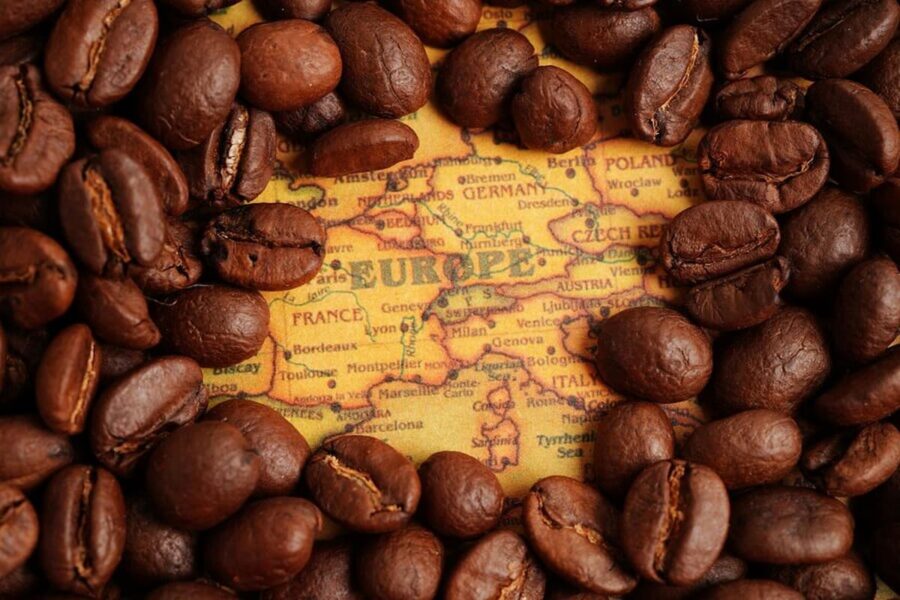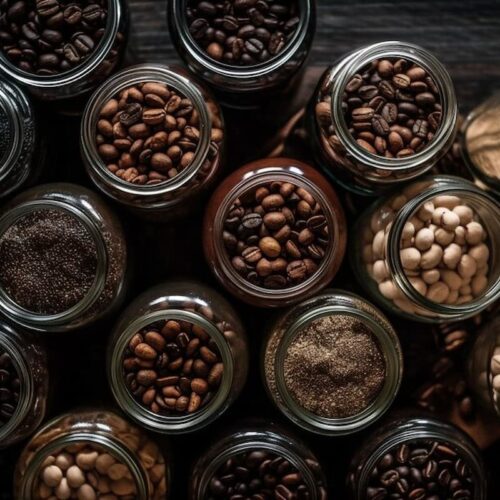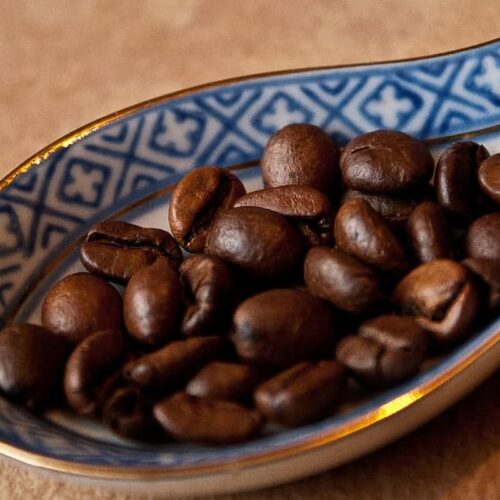Coffee lovers around the world are always searching for unique and exotic flavors.
While most people enjoy common varieties like Arabica and Robusta, some coffee beans are so rare that they are considered a luxury.
These beans are often grown in remote locations, processed using unique methods, and have limited availability.
In this article, we explore the top 10 rarest coffee beans in the world and what makes them so expensive.
1. St. Helena Coffee – Napoleon’s Favorite Brew
Origin: St. Helena Island, South Atlantic Ocean
Flavor Profile: Floral aroma, wine-like acidity, smooth body
Grown on the remote island of St. Helena, this coffee gained fame due to Napoleon Bonaparte’s love for it. The island’s volcanic soil and perfect climate create a unique flavor profile that cannot be found anywhere else. Since the island is small and isolated, production is limited, making St. Helena coffee one of the rarest and most expensive beans in the world.
2. Black Ivory Coffee – The Most Exclusive Elephant-Processed Coffee
Origin: Thailand
Flavor Profile: Smooth, earthy, with hints of chocolate and spices
Black Ivory Coffee is made using a fascinating process where Thai elephants consume Arabica coffee cherries and naturally ferment them during digestion. The beans are later collected, cleaned, and roasted. This process removes bitterness and enhances the smoothness of the coffee. Due to its highly specialized production and labor-intensive process, Black Ivory Coffee is one of the rarest and most expensive coffees in the world.
3. Hacienda La Esmeralda Geisha – The Most Awarded Coffee
Origin: Panama
Flavor Profile: Jasmine aroma, bright acidity, fruity sweetness
Geisha coffee from Hacienda La Esmeralda in Panama is famous for its complex and delicate flavor profile. The beans are grown at high altitudes, which slows their maturation and intensifies their flavors. This coffee has won multiple international awards, and its price at auctions can reach thousands of dollars per kilogram.
4. Kopi Luwak – The Controversial Civet Coffee
Origin: Indonesia, Philippines, Vietnam
Flavor Profile: Low acidity, smooth texture, chocolatey undertones
Kopi Luwak is made from coffee cherries eaten and excreted by civet cats. The fermentation that happens inside the civet’s digestive system alters the flavor of the beans, giving them a unique smoothness. However, due to unethical farming practices, it is important to ensure that the Kopi Luwak you purchase comes from sustainable and ethical sources.
5. Ospina Coffee – The Oldest Coffee Brand in the World
Origin: Colombia
Flavor Profile: Caramel sweetness, nutty aroma, full-bodied
Ospina Coffee is one of the oldest coffee brands in existence, tracing its history back to the 1800s. Grown at high elevations in Colombia, these beans are carefully cultivated and harvested by hand. The long-standing tradition and careful processing make this coffee one of the rarest and most luxurious in the world.
6. Hawaiian Kona Coffee – The Best Coffee from the USA
Origin: Hawaii, USA
Flavor Profile: Smooth, nutty, medium-bodied
Kona coffee is grown in the Kona district of Hawaii, where the volcanic soil and perfect climate create an ideal environment for coffee cultivation. True Kona coffee is rare because it is produced in small batches, and many brands sell blends rather than 100% pure Kona beans.
7. Jamaican Blue Mountain Coffee – The Most Balanced Coffee
Origin: Jamaica
Flavor Profile: Mild, balanced, slight chocolatey aftertaste
Jamaican Blue Mountain Coffee is known for its smoothness, mild acidity, and well-balanced flavor. Due to strict government regulations and limited production, only coffee grown in the certified Blue Mountain region can be labeled as such. This exclusivity makes it one of the most expensive coffees in the world.
8. Yirgacheffe Wild Coffee – Ethiopia’s Natural Wonder
Origin: Ethiopia
Flavor Profile: Floral, citrusy, bright acidity
Yirgacheffe coffee is naturally grown in the wild forests of Ethiopia. Unlike cultivated coffee, these beans grow without human intervention, absorbing unique nutrients from their natural environment. The limited availability and unique processing methods make it one of the rarest beans in the world.
9. Maragogipe – The Elephant Bean Coffee
Origin: Brazil, El Salvador, Nicaragua
Flavor Profile: Sweet, nutty, mild acidity
Maragogipe beans are known for their exceptionally large size and delicate flavor. They require specific growing conditions, making them difficult to cultivate on a large scale. Their rarity and unique size contribute to their high price.
10. Laurina Coffee – The Naturally Low-Caffeine Bean
Origin: Réunion Island, France
Flavor Profile: Vanilla aroma, mild acidity, smooth finish
Laurina, also known as Bourbon Pointu, is a naturally low-caffeine coffee variety. Unlike decaffeinated coffee, Laurina retains its natural flavors without undergoing chemical processing. Due to its low yield and fragility, this coffee remains one of the rarest in the world.
How to Buy Rare Coffee Beans: Tips for Finding Authentic Sources
Since rare and exotic coffee beans are highly sought after, it’s essential to buy from reputable sources to ensure authenticity and quality. Here are some key tips:
- Buy from Specialty Roasters: Look for trusted roasters who specialize in rare coffee varieties and provide detailed origin information.
- Check for Certifications: Authentic rare coffees often have certifications such as Fair Trade, Direct Trade, or Rainforest Alliance.
- Avoid Blends: Many sellers mix rare beans with regular coffee. Always check that you’re buying 100% pure beans.
- Read Customer Reviews: Research reviews from verified buyers to ensure the coffee meets quality expectations.
- Understand Pricing: If a rare coffee is priced too low, it may not be genuine. High-quality, authentic beans come at a premium price.
By following these guidelines, you can enjoy the true flavors of rare coffee while supporting ethical and sustainable producers.
Conclusion
Rare and exotic coffee beans offer unique flavors and experiences that go beyond the ordinary.
Their high prices are justified by limited availability, challenging growing conditions, and specialized processing methods.
Whether you’re a coffee connoisseur or just curious about these exclusive beans, trying one of them can be a once-in-a-lifetime experience.
If you’re looking to explore these rare coffees, always choose reputable sellers and ensure ethical sourcing.




